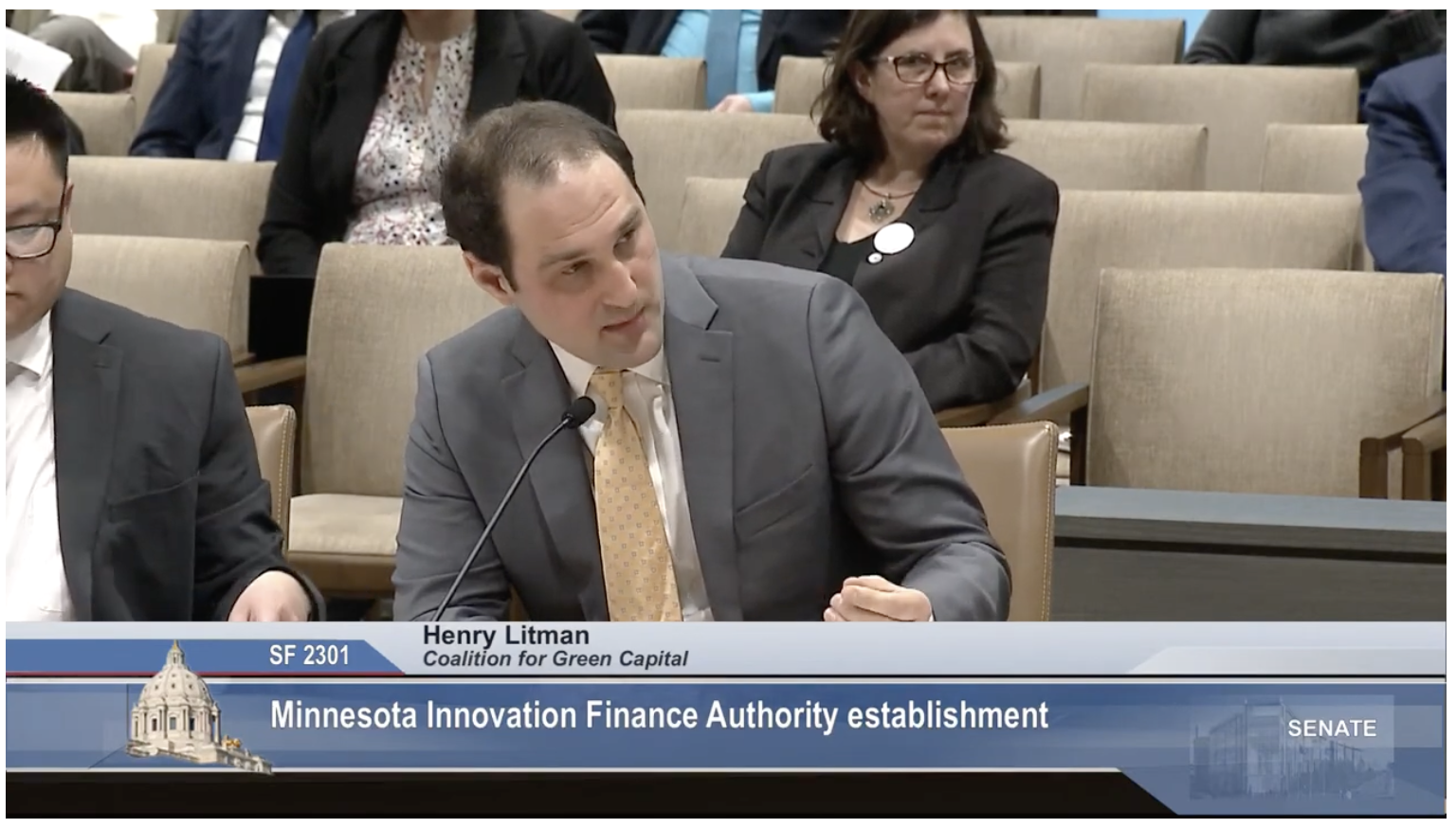
As the Environmental Protection Agency (EPA) prepares to award $27 billion from the Greenhouse Gas Reduction Fund (GGRF), several states are moving quickly to prepare for the anticipated investments in local communities. At the same time, the Coalition for Green Capital (CGC) has been working with grassroots advocates and lawmakers across several states to support local green bank legislation and provide expert feedback on how these entities can leverage the GGRF.
A 2020 CGC report found that capital markets and financing tools did not provide adequate support for clean energy projects in Minnesota and outlined steps to establish a green bank to fill this need. Having advocated for nearly a decade for Congress to capitalize a nationwide green bank, CGC also explained in their report that the state should establish a local green bank in preparation for the federal investments that were to come, should such legislation pass.
Lawmakers Introduce Green Bank Legislation
This month, Minnesota State Senator Tou Xiong and Representative Emma Greenman introduced legislation, HF2336/SF2301 to establish the Minnesota Climate Innovation Finance Authority (CIFA) with $45 million. CGC recently testified before the Minnesota Senate Energy, Utilities, Environment, and Climate Committee, providing expert testimony about the GGRF and the opportunity to deploy the highly successful green bank model in the state.
“The Minnesota Climate Innovation Finance Authority can play a key role in advancing the carbon to clean transition in this state,” said Henry Litman, senior director for CGC. “Minnesota has both ample opportunity for green bank investment and ample need, particularly in rural, tribal, and low-income areas that historically have not received their fair share of investment. This is a gold standard bill with robust consumer protection and accountability standards. It is well designed to mobilize public-private investment in the state.”

The green bank legislation is supported by a broad coalition of organizations in the state. In an op-ed, Julia Nerbonne, executive director of Interfaith Power and Light, writes that creating a state green bank will help ensure equitable access to clean energy for low-income and disadvantaged communities, pointing to the success of the American Green Bank Consortium and the upcoming opportunity to leverage the EPA’s $27B GGRF.
“If passed into law, the bill will be a publicly accountable financing authority whose mission is to help folks in communities across the state get access to the funds that bring these projects into the literal sunlight,” writes Nerbonne. “The Coalition for Green Capital announced this week that since 2011, cumulative public-private investment caused by green banks has surpassed $14.85 billion. It’s time for Minnesota to get on the train.”
The legislation has been heard by multiple committees across both chambers of the statehouse, and Governor Tim Walz has expressed support for a state green bank and included $34 million in his 2022 budget for a green bank.
Tell Lawmakers to Fund Minnesota’s Green Bank
National environmental and clean energy organizations are invited to sign a letter calling on state lawmakers to pass the green bank legislation. CGC and a local coalition of advocates are leading the letter urging support for the legislation and touting the state’s opportunity to leverage unprecedented funding for clean energy.
“The Minnesota Climate Innovation Finance Authority is being set up at a time where federal dollars are more readily available, making Minnesota well positioned to see exponential growth in clean energy investments,” reads the letter. “Your program will help to close the gap for communities that have traditionally been left behind including Tribal communities, communities of color, and low-income communities.”
Growing Network of Green Banks Prepares to Leverage Federal Dollars
CGC continues to engage advocates and state lawmakers on the opportunities afforded by statewide green banks. Since 2021, eight states have passed or introduced green bank legislation including Utah; New Mexico; Alaska; Minnesota; Illinois; Virginia; Vermont; and Maine.
These new entities will build upon the incredible success of the existing coalition of green banks and clean energy lenders that makeup the American Green Bank Consortium. The consortium’s latest report found that its members caused $4.64B in clean energy investments in 2022, including more than $1.2B that was invested in low-income and disadvantaged communities.
CGC has announced the formation of new strategic partnerships with clean energy lenders and investors. This robust network of green banks and clean energy lenders has already identified an initial pipeline of green projects valued at $13B in public-private capital over the next several years and intends to apply for $20B in federal funds from GGRF to launch a nationwide green bank.